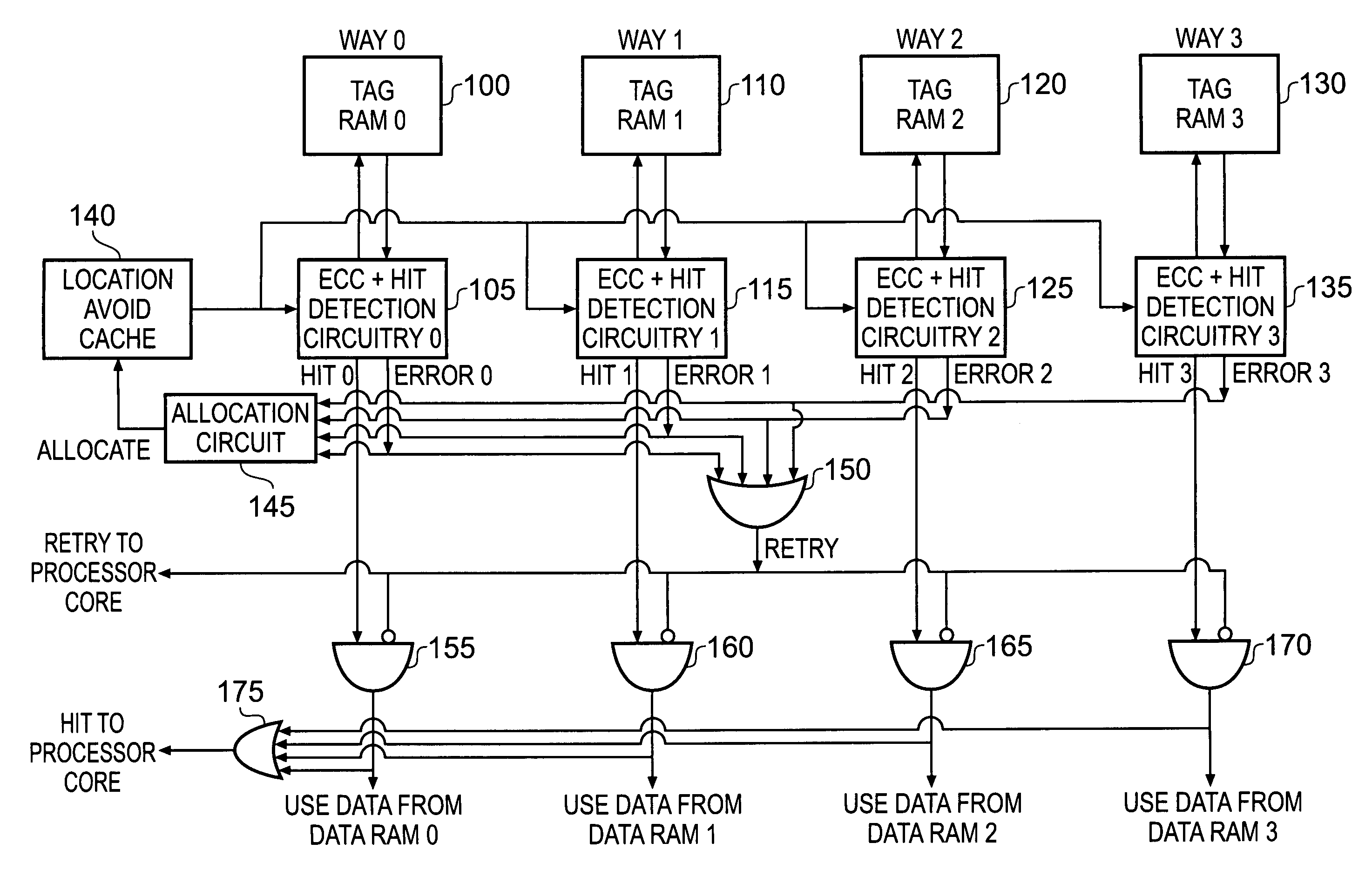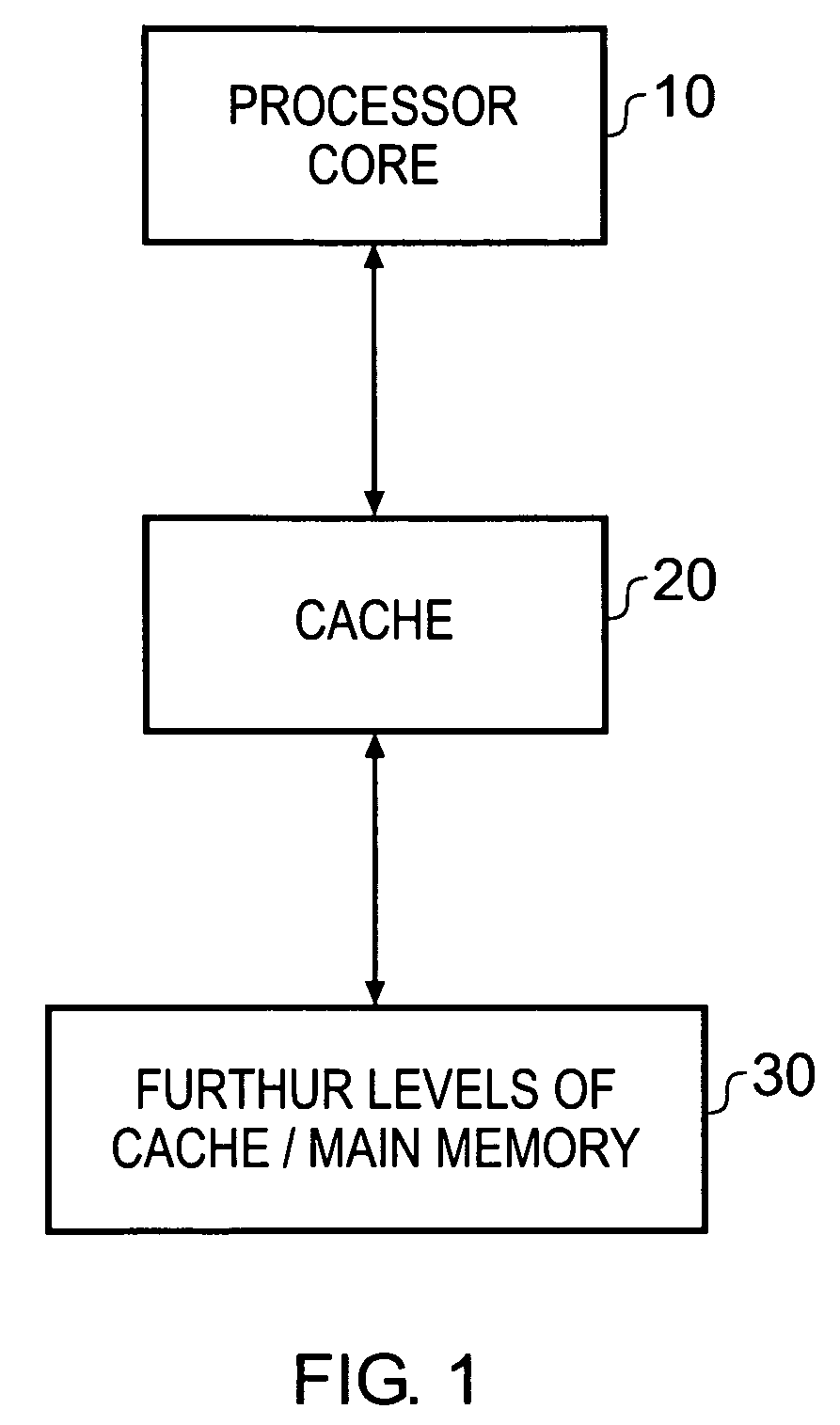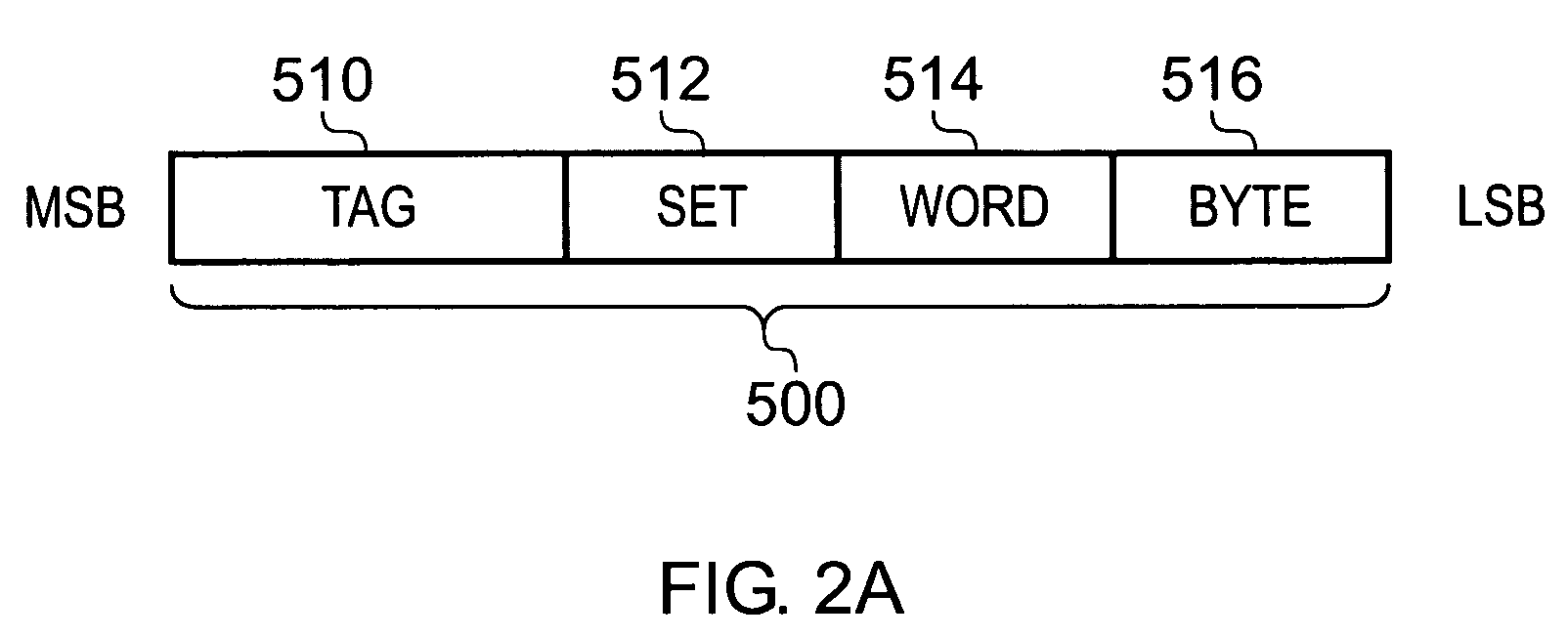The storage devices within the data processing apparatus are vulnerable to errors.
These errors may be soft errors, as for example may be caused by
neutron strikes, where the state of data held in the storage device can be changed, but the storage device will still write and read data correctly.
Alternatively, the errors may be hard errors, as for example caused by electro-migration, in which the affected memory location(s) within the storage device will always store an incorrect
data value, and the error cannot be corrected by re-writing the
data value to the storage device location(s).
However, for the example of a
hard error, if the corrected data value is then written back to the same memory location, it will again be stored incorrectly at that memory location, since the
hard error stems from a fault in the storage device itself.
Often,
hard error faults occur due to manufacturing defects.
Accordingly, whilst the described technique can be used to redirect accesses to addresses where hard errors are detected at production time, the technique does not assist in handling hard errors that occur after production, for example due to
process variation and aging, nor is it of any assistance in handling soft errors.
However, typically the corrected data is not written back to the storage device itself, nor is any attempt made to determine whether the error was a
soft error or a hard error.
Firstly, additional logic is required on the read path, and this can adversely affect the timing of the read operation, and also adversely affects
power consumption.
Such an approach may also require
control logic to stall the device performing the read operation (for example a processor pipeline).
Additionally, because the data in the storage device is not corrected, there is a possibility that further errors could occur, and that the accumulating errors may change over time from being correctable to uncorrectable, or even undetectable.
However, this mechanism requires time, and consumes energy.
However, if the error is a hard error, then the error will re-occur when the read is retried, and the operation will hence enter a loop where the data value is corrected, but continues to be wrong when re-read from the storage device.
In this situation there is the potential for the
system to “spin-lock”, trapped in a loop of accessing, attempting correction and retrying, unless mechanisms are in place to spot such a behavior and break out of the loop.
Whilst the above issues are generally applicable to any type of storage device provided within the data processing apparatus, further specific issues can arise if the storage device in question is a cache.
However, if a write back (WB) mode of operation is employed, then any updates made to the contents of a cache line are not immediately replicated in the corresponding locations in memory.
If the original error occurred as the result of a hard error, and the refetched data from memory is allocated into the same cache line, then the next time the data is accessed in the cache, the same error is likely to be detected again.
This will potentially cause significant performance degradation.
If the original error occurred as the result of a hard error then, when the access is retried, the same error is likely to be detected again.
The processor will get stuck in a
spinlock, continually retrying the access and detecting the error.
The problems become even more complex if the cache is at least partially a write back cache, since if an error is detected in a cache line using such a write back mechanism, then it is not merely sufficient to invalidate the cache line, but instead the cache line contents must first be corrected and then evicted to memory.
Accordingly the “assume miss and invalidate” approach that can be applied to a write through cache cannot be used for a write back cache, because the cache line with the error in it may be valid and dirty, and hence if the first technique were used the
dirty data would be lost.
This applies not only to the data values in the cache line itself, but also to the associated address identifier, and associated
control data such as the valid bit indicating if the cache line is valid and the
dirty bit indicating if the cache line is dirty, since all of these contents may potentially be subject to errors.
Accordingly, when adopting a write back mode of operation in a cache, it may be necessary to perform
error detection and correction even on cache lines that on face value appear to be invalid.
The technique can hence not be used to
handle errors that only manifest themselves during normal operation.
Hence, as with the earlier-mentioned article, the techniques described therein cannot be used to
handle errors that manifest themselves during normal operation, for example soft errors, or hard errors that occur for example through aging.
Hence, it can be seen that the techniques described in this paper involve either arranging the cache as a simple write through cache, or alternatively require the need for complex techniques to maintain logs of errors and make decisions based on the log entries, such techniques consuming significant power and taking up significant area within the data processing apparatus.
There are many applications where such power and area hungry mechanisms will not be acceptable.
 Login to View More
Login to View More  Login to View More
Login to View More 


